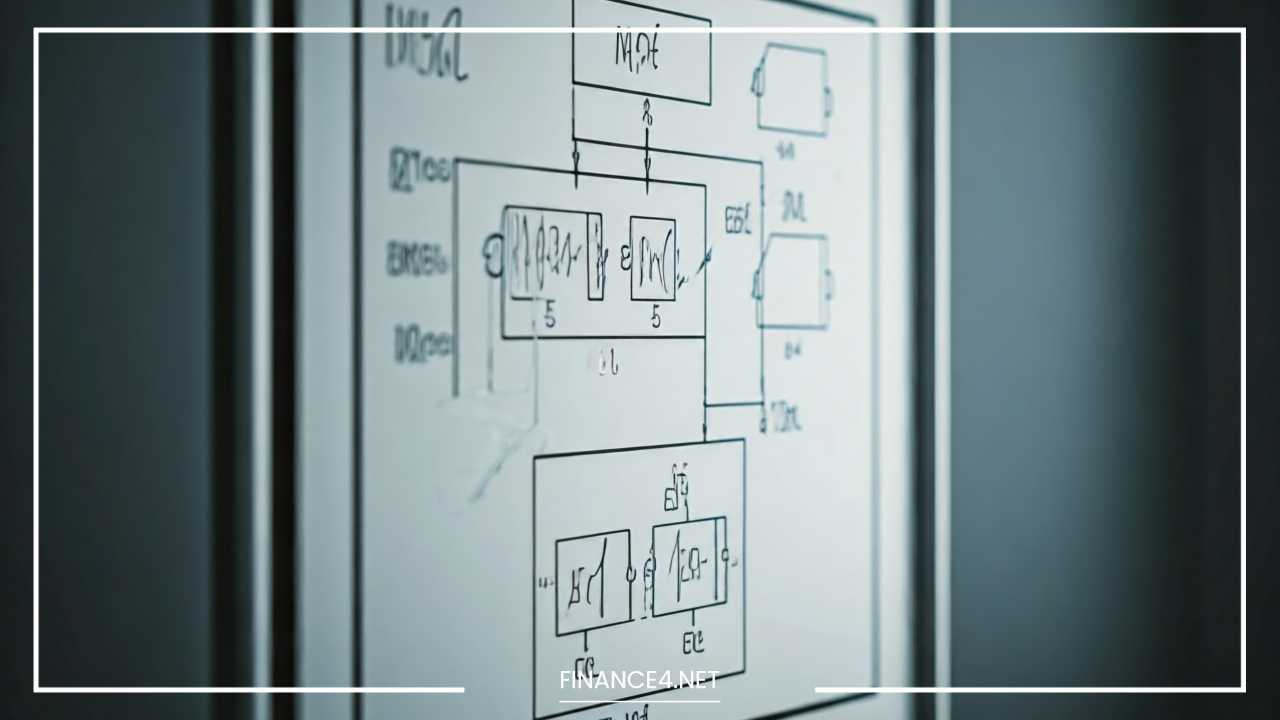Cryptographic Hash Functions: Definition and Examples

Cryptographic Hash Functions
Cryptographic Hash Functions: Definition and Examples
In today’s digital landscape, where cyber threats and data breaches are commonplace, cryptographic hash functions play a vital role in maintaining data integrity and security.
These mathematical algorithms are fundamental in a variety of applications, from securing communication channels to validating data authenticity and protecting sensitive information.
This comprehensive guide explores the concept of cryptographic hash functions, their properties, different types, real-world applications, and the critical considerations for choosing the right hash function for specific needs.
Definition
A cryptographic hash function is a specialized mathematical algorithm that takes an input (often referred to as a message) and produces a fixed-size output, known as a hash value or digest.
This output is a seemingly random sequence of characters that uniquely represents the input data. The primary purpose of cryptographic hash functions is to ensure data integrity, as they can detect any alterations made to the original data.
They are designed to be secure against various types of attacks, making them indispensable in modern cryptography.
The uniqueness of a hash value is a crucial feature: even a small change in the input will result in a dramatically different hash value.
This property makes hash functions highly effective for detecting data tampering. Cryptographic hash functions are widely used in security protocols, digital signatures, password hashing, and data integrity checks.
Properties of Cryptographic Hash Functions
Cryptographic hash functions exhibit several key properties that make them suitable for security applications:
- Deterministic: A cryptographic hash function is deterministic, meaning that for a given input, it will always produce the same hash value. This consistency allows users to reliably verify data integrity by comparing hash values before and after data transmission or storage.
- Efficient: The function must be computationally efficient to ensure that the hash value can be computed quickly. This efficiency is essential for practical applications where performance and speed are critical, such as real-time data processing and large-scale systems.
- Pre-image Resistance: Also known as one-wayness, pre-image resistance ensures that it is computationally infeasible to reconstruct the original input from its hash value. This property is crucial for protecting sensitive information, such as passwords and personal data, from being reverse-engineered.
- Second Pre-image Resistance: This property guarantees that it is computationally infeasible to find a different input that produces the same hash value as a given input. Second pre-image resistance prevents attackers from creating an alternative input that appears identical in terms of its hash value, thus ensuring the uniqueness of hash values.
- Collision Resistance: Collision resistance ensures that it is computationally infeasible to find two distinct inputs that produce the same hash value. This property is vital for maintaining data integrity, as it prevents different sets of data from being indistinguishable in their hashed form.
Types of Cryptographic Hash Functions
Several cryptographic hash functions have been developed over time, each with its unique characteristics and use cases:
- MD5 (Message Digest 5): MD5 was introduced by Ronald Rivest in 1991 and became one of the earliest widely adopted hash functions. It produces a 128-bit hash value and was initially praised for its efficiency and security. However, as computational power increased, vulnerabilities in MD5 were discovered. Researchers found that it was susceptible to collision attacks, where different inputs could produce the same hash value. Consequently, MD5 is now considered obsolete for cryptographic purposes and is generally avoided in favor of more secure alternatives.
- SHA-1 (Secure Hash Algorithm 1): SHA-1 was developed by the National Security Agency (NSA) and published by the National Institute of Standards and Technology (NIST) in 1993. It generates a 160-bit hash value and was designed to address the weaknesses of MD5. Despite its initial advantages over MD5, SHA-1 has also been found vulnerable to collision attacks. In 2017, researchers demonstrated a practical collision attack against SHA-1, leading to its deprecation in many security-sensitive applications.
- SHA-2 (Secure Hash Algorithm 2): SHA-2 is a family of hash functions that includes SHA-224, SHA-256, SHA-384, and SHA-512. These functions produce hash values of varying lengths, ranging from 224 to 512 bits. SHA-2 was introduced to overcome the limitations of MD5 and SHA-1, offering improved security and resistance to attacks. SHA-256 and SHA-512 are particularly popular due to their strong security properties and are widely used in modern cryptographic protocols.
- SHA-3 (Secure Hash Algorithm 3): SHA-3, introduced in 2015, represents the latest addition to the Secure Hash Algorithm family. Unlike SHA-2, which is based on the Merkle-Damgård construction, SHA-3 is based on the Keccak algorithm. SHA-3 provides a different approach to hash function design and offers strong security guarantees. It is resistant to potential weaknesses found in earlier hash functions and is considered a robust choice for new cryptographic applications.
Applications of Cryptographic Hash Functions
Cryptographic hash functions have a wide range of applications, each leveraging their unique properties to enhance security and integrity:
- Data Integrity: Hash functions are commonly used to verify the integrity of data. When data is transmitted or stored, its hash value can be computed and compared to a previously calculated hash value. If the hash values match, the data is considered unchanged. This application is crucial for detecting data corruption, tampering, or unauthorized modifications during transmission or storage.
- Password Storage: Hash functions are employed to securely store passwords in databases. Instead of storing passwords in plain text, systems hash the passwords and store only the hash values. This approach enhances security by ensuring that even if the database is compromised, the stored passwords remain protected. To further strengthen security, techniques such as salting (adding a unique random value to each password before hashing) are used to defend against precomputed attacks, such as rainbow tables.
- Digital Signatures: Cryptographic hash functions are essential for creating digital signatures, which provide authentication and integrity for electronic documents. A digital signature is generated by hashing the document and then encrypting the hash value with the signer’s private key. Recipients can verify the signature by decrypting it with the signer’s public key and comparing the result to a freshly computed hash of the document. This process ensures that the document has not been altered and verifies the identity of the signer.
- Blockchain Technology: Blockchain technology relies heavily on cryptographic hash functions to ensure the security and immutability of the distributed ledger. In a blockchain, each block contains a hash of the previous block, creating a chain of blocks that are linked together. This structure ensures that altering any block would require recalculating the hash values of all subsequent blocks, making tampering virtually impossible. Cryptographic hash functions are fundamental to the security and integrity of blockchain-based systems, including cryptocurrencies like Bitcoin and Ethereum.
- File Synchronization: Hash functions are used in file synchronization tools to detect changes and ensure that files are updated accurately across different devices or systems. By computing hash values for files, synchronization tools can identify which files have been modified and synchronize them accordingly. This application is essential for maintaining consistency and up-to-date information across multiple platforms.
- Random Number Generation: Some cryptographic hash functions can be used to generate pseudo-random numbers for various applications. By hashing a seed value or an initial input, hash functions can produce a sequence of numbers that appear random and are suitable for cryptographic operations. These random numbers are used in various applications, including cryptographic key generation and secure data encryption.
Choosing the Right Hash Function
Selecting the appropriate cryptographic hash function requires careful consideration of several factors, including security requirements, performance, and future-proofing:
- Security Requirements: Assess the security needs of the application to determine the appropriate hash function. For most modern applications, hash functions from the SHA-2 or SHA-3 families are recommended due to their strong security properties and resistance to known attacks. Avoid using outdated or vulnerable hash functions like MD5 and SHA-1.
- Performance Considerations: Evaluate the computational efficiency of the hash function, particularly for applications that require high-speed processing. SHA-2 and SHA-3 offer a good balance of security and performance, but specific performance needs may vary depending on the use case. Consider the trade-offs between security and performance to ensure that the chosen hash function meets the application’s requirements.
- Future Proofing: Choose hash functions that are likely to remain secure against future advancements in cryptography and computing power. SHA-2 and SHA-3 are designed with future security in mind and are less likely to become obsolete in the near term. Stay informed about the latest developments in cryptographic hash functions and be prepared to adopt new standards as they emerge.
Real-World Considerations and Examples
To further understand the practical implications of cryptographic hash functions, consider the following real-world examples:
- SSL/TLS Certificates: In web security, SSL/TLS certificates use hash functions to ensure secure communication between web servers and clients. During the SSL/TLS handshake, hash functions are used to create and verify digital signatures for certificates, ensuring that the certificates are valid and have not been tampered with.
- Software Distribution: When distributing software, hash functions are used to verify the integrity of downloaded files. Software developers provide hash values for their files, allowing users to compute the hash value of the downloaded file and compare it to the provided hash value. This process ensures that the file has not been altered or corrupted during download.
- Digital Forensics: In digital forensics, hash functions are used to create unique identifiers for digital evidence. Forensic investigators compute hash values for files and other digital artifacts to ensure their integrity throughout the investigation. Any changes to the evidence would result in a different hash value, indicating potential tampering.
Future Trends and Developments
As technology continues to evolve, several trends and developments may influence the field of cryptographic hash functions:
- Post-Quantum Cryptography: The advent of quantum computing poses potential threats to current cryptographic algorithms, including hash functions. Researchers are actively exploring post-quantum cryptographic algorithms that are resistant to quantum attacks. These developments may lead to new hash functions designed to withstand the capabilities of quantum computers.
- Increased Computational Power: As computational power increases, the potential for brute-force and collision attacks also grows. Cryptographic hash functions must continuously evolve to address these advancements. Ongoing research focuses on developing hash functions that remain secure in the face of growing computational capabilities.
- Integration with Emerging Technologies: Cryptographic hash functions will continue to play a crucial role in emerging technologies such as Internet of Things (IoT) devices, artificial intelligence (AI), and decentralized systems. Ensuring the security and integrity of these technologies will require innovative applications of hash functions and other cryptographic techniques.
Final Thoughts
Cryptographic hash functions are fundamental to modern data security and integrity. Their ability to generate unique and secure hash values is essential for a wide range of applications, from ensuring data integrity to protecting sensitive information and supporting digital authentication.
By understanding the principles and properties of cryptographic hash functions, as well as their real-world applications and future trends, we can make informed decisions about their use in various technological contexts.
As technology continues to advance, staying updated on the latest developments in cryptographic hash functions and their potential vulnerabilities will be crucial for maintaining the security and trustworthiness of digital systems.



